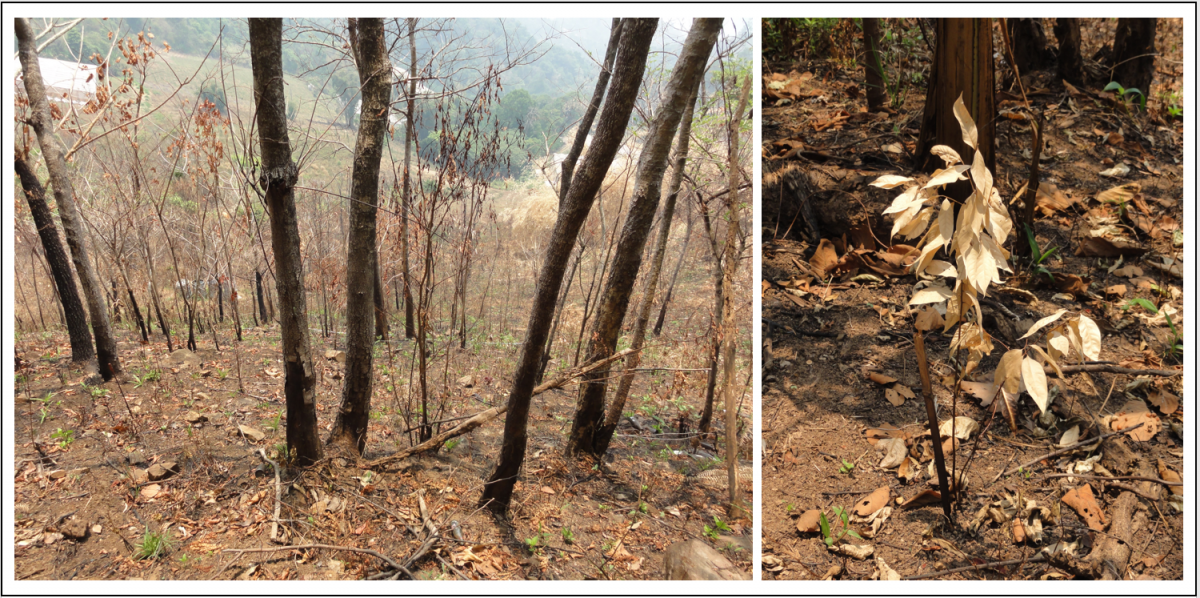Fire resilience of framework tree species in hill evergreen forest

This paper won an award for best oral presentation at the national conference: "Biological and Cultural Diversity: Living in Harmony" - run by the NSTDA (National Science and Technology Development Agency) June 15-17, 2016. Congratulations to Duck and Dia!
The ability for planted trees to survive a forest fire is crucial, when restoration is being performed in seasonally dry climates. Experiments that involve deliberately burning planted trees are of course out of the question! But when an accidental fire swept through some trial framework species plots, of various ages, in the upper Mae Sa Valley (where baseline data had been previously collected from labelled planted trees), Duck turned this little ecological disaster into a rare scientific opportunity and gained her MSc by doing so.
ABSTRACT: The framework species method of forest restoration involves planting 20-30 native tree species, to promote natural regeneration and biodiversity recovery. Fire disturbance is common in northern forest ecosystems during the dry season. Therefore, fire resilience is an important characteristic of seedlings for restoring such ecosystems. The objectives of this study were to monitor the performance of framework trees, dynamics and composition of the tree community after fire. Growth performance (root collar diameter, height and crown width), fire intensity and ground flora composition were recorded in different aged plots (1, 2, 14 and 17 years), 3 times (2, 18 and 30 weeks) after burning.
Survival of framework trees was influenced by fire intensity and root collar diameter. The survival percentages of framework trees after fire were not significantly different in 14 and 17 years-old plots (87% and 94% respectively), whilst a significant difference was detected between the 1 and 2 year-old plots (62% and 22% survival respectively). Seven species had excellent post-fire survival>70%: Bischofia javanica, Ficus auriculata, Heynea trijuga, Manglietia garrettii, Protium serratum, Prunus cerasoides and Spondias axillaris. When considering ability to re-sprout after burning, we found 8 species with high fire resilience: B. javanica, Castanopsis calathiformis, Diospyros glandulosa, F. auriculata, M. garrettii, Phoebe lanceolata, P. cerasoides and Sarcosperma arboreum.



